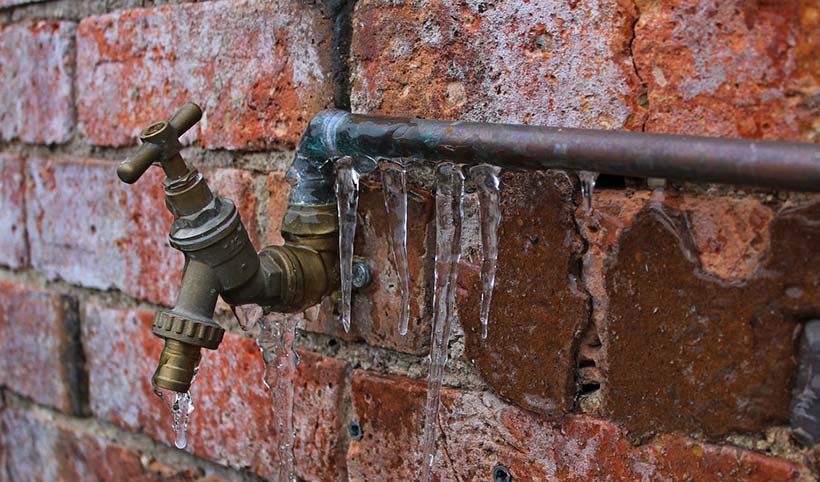Freezing winter weather brings Christmas fun and frozen pipes.
You can prevent frozen water pipes with lagging or insulation, or when the pipes freeze, thaw them with a hairdryer or heat gun.
While winter brings the family together for holiday celebrations, including Christmas, Thanksgiving in the US, and Hanukkah, it also brings problems due to low temperatures.
So, what unpleasant winter events can we expect in the UK?
Other than the unwanted pounds we pile on at Christmas every year?
The usually untimely frozen water pipe is one occurrence that pops to mind.
In this article we explain how to thaw a frozen water pipe.
Article Chapters
Prevent Frozen Pipes
We have all heard the phrase, “An ounce of prevention is worth a pound of cure” and in this case, it is very appropriate.
The best moment to fix a frozen pipe is before it happens.
So a proper plumbing investigation should be carried out before the icy weather arrives.
October till November is usually suitable, but it depends on where you live.
In parts of Scotland, for example, September would be prudent.
Are there water pipes in the attic?
If so, get in there with a torch and make sure they are well insulated.
The pipes themselves need lagging.
Foam insulation with a cut slit is inexpensive and straightforward to install.
Use silver tape to cover the slit, and at intersections and valves.
Other products for very exposed areas are “heat tape,” and “heat cable”.
A local hardware shop will stock products suitable for home use.
When a Pipe Freezes
Frozen water pipes will occasionally happen, even when precautions have been taken.
If a pipe freezes, first, try running water through it.
Does it flow even a tiny bit?
If so, let it run to advance the thawing process.
The objective is to thaw it enough before the pipe expands so much that it bursts.
Several items will help speed up thawing a frozen water pipe:
A hairdryer is a great device to thaw pipes.
Do not overheat the pipe in the same spot, but keep it moving over the surface, like if you were spray painting.
A heat gun is preferable to a hairdryer if you have one close at hand, like a hairdryer on steroids.
Again, keep it moving.
Soaking towels or cloths in hot water and wrapping them around the pipes also works well.
The important point is to keep the towels hot.
An electric heating pad. If you have one handy, this is preferable to the towel method because it is faster and makes less mess.
A space heater.
This is a help when using any of the methods above as it speeds the thawing process, and keeps the person doing the work warm.
Precautions to Take When Thawing a Frozen Pipe
Never use a blowtorch to melt ice in pipes.
It might sound reasonable, but it’s too much horsepower.
Likewise, don’t apply any other open flame. It is too dangerous in a confined space.
After the Thaw
Once the pipe is thawed and flowing as usual, check thoroughly for any cracks that might have developed in the piping.
If there are any leaks, the plumbing should be fixed as soon as possible.
Now that problem spots have been identified, take better precautions for the future.
Install more lagging or turn up the heating in the space, or if that is not possible, you might have to relocate the pipelines.

